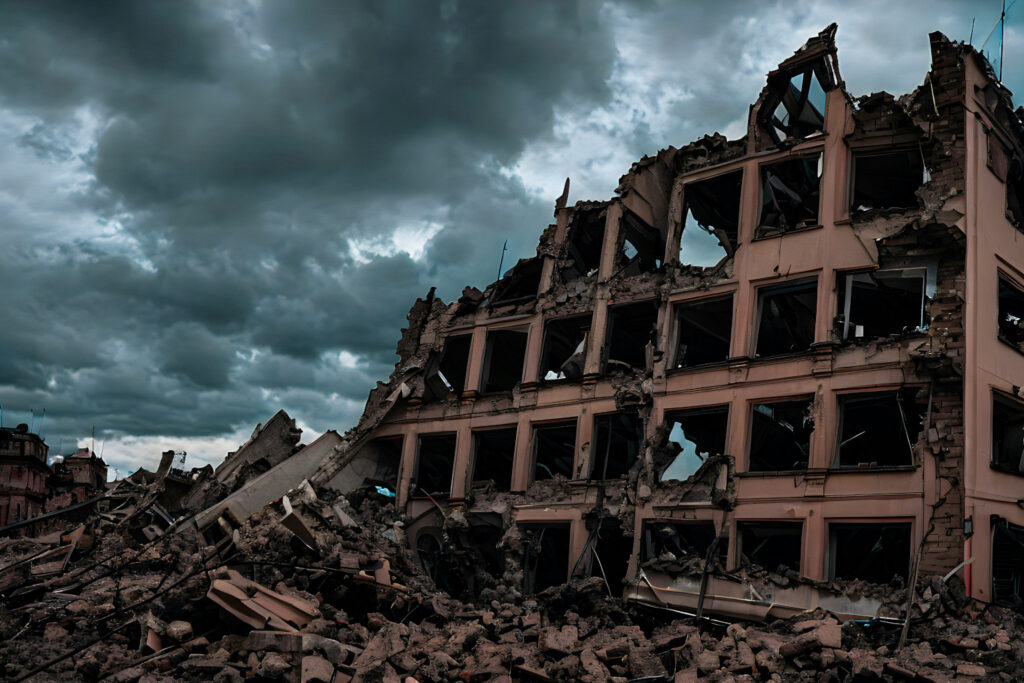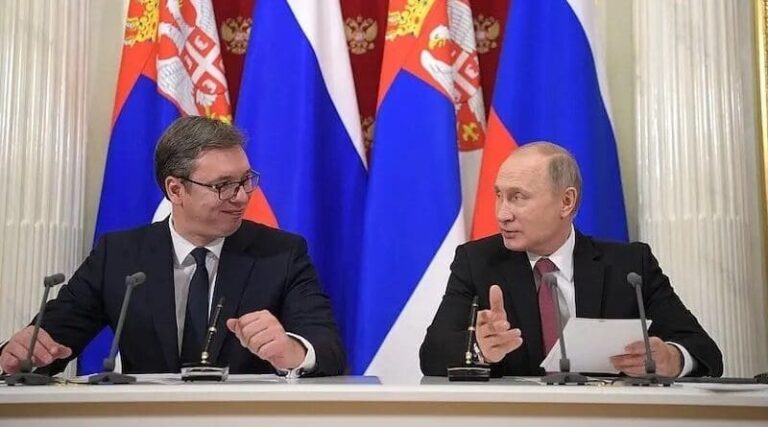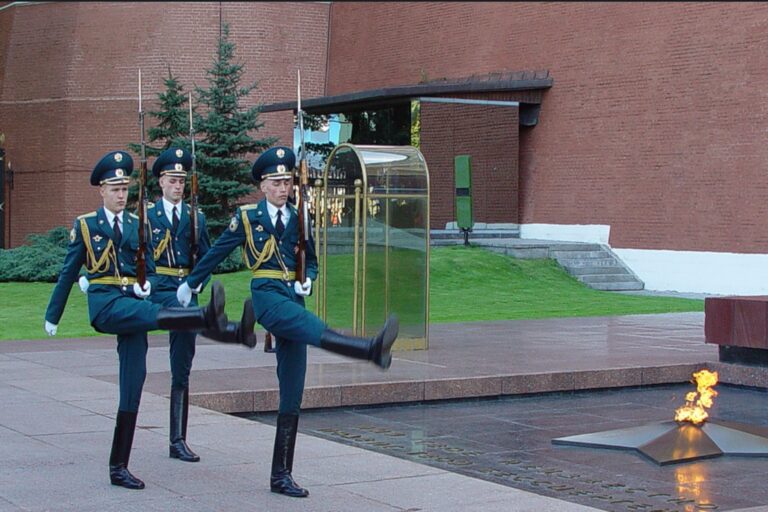There is growing concern that countries funding the defense of Ukraine may not continue to do so. This has led to a discussion whether it’s possible to provide Ukraine with some or all of more than $327 billion in Russian assets frozen after Russia invaded in February 2022—with an estimated $218 billion held in Europe. The focus of this discussion understandably has been on peace and security. But there is another issue that is central to the question of funding Ukraine: justice. Justice underlies the institutions and governance of Europe and its western economic and political partners. It is what has made long term peace and security possible.
Many have understood the relationship of justice to peace and security, including Immanuel Kant, Frederick Douglas, and Reverend Martin Luther King Jr. President Dwight Eisenhower, no stranger to conflict, once observed that justice and peace are two sides of the same coin. The relationship of justice and peace is based, in part, on who benefits from them. Peace is prospective in nature. Its beneficiaries are those alive now and who will be in the future. Justice, on the other hand, is both prospective and retrospective. It focuses not only on the living, but also on the dead and injured. Peace without justice for those killed or impaired by conflict leaves wounds that do not close—setting the stage for future conflict.
In Europe and the west, domestic justice has been premised upon the notion that only the actions, laws, and social structures that have the consent of the people are just. This notion of justice has been incorporated into the laws of many countries to make it possible for personal and national goals to be imagined, defined, and pursued. Said simply, domestic justice requires people have access to the resources, opportunities, and political representation necessary for them to compose productive lives. It makes societies more stable by making them fairer.
The international community also has made justice a core element of its architecture. The western notion of justice hasn’t been universally accepted, but it has been incorporated into many foundational aspects of international law, including political structures to determine who deserves what and why. The membership growth of the United Nations, from 51 in 1945 to 193 today, reveals the importance people attach to self-determination and the fair allocation of resources. Ethnic groups historically disadvantaged in their countries often have sought to create their own nations to ensure they have the economic opportunities historically denied to them.
But despite the role justice has played within nation states and in shaping the international map, diplomats often have been unable to make it an element when attempting to resolve conflicts. There are several reasons why.
First, the rise in asymmetric war has increased the likelihood conflicts will end in stalemates, which makes the apprehension, prosecution, and punishment of wrongdoers difficult. Second, international law, reinforced by domestic laws in countries around the world, focuses on utilizing criminal law to provide justice rather than civil law, an approach encouraged by the financial services industry and an overly broad, reflexive application of sovereign immunity. Third, bank secrecy, tax havens, numbered accounts, and shell corporations make it difficult to identify and access funds to compensate those injured by aggressors, even when legal remedies are available. As a result of these and other challenges, ceasefires often are all that have been achieved when negotiating the end of conflicts.
It is possible, and essential, for diplomats to be more ambitious when seeking peace. While apprehension and prosecution of wrongdoers often will remain elusive, steps should be explored to make economic justice possible through the use of civil law. The transfer of frozen Russian assets to Ukraine would be an example of such an approach.
But would it be legal? Some assert there exists “no direct model” for seizing frozen assets and that doing so would violate international law and principles of sovereign immunity. It’s an important question and the future peace and security of Europe may well depend upon its answer. Fortunately, there is an argument that it would be legal to transfer frozen Russian assets to satisfy any judgments obtained by Ukraine and Ukrainians for Russian violations of the European Convention on Human Rights (ECHR).
The ECHR is applicable to all Council of Europe (COE) members and all “High Contracting Parties.” Ukraine is both. Russia was a COE member until its expulsion on September 16, 2022, and remains bound by the Convention for any violations of the ECHR before its ouster. Thus, the European Court of Human Rights (the Court) has jurisdiction for any claims against Russia filed by Ukraine and private parties (Article 33 & 34). This includes damage claims for actions Russia has taken outside of its own borders when armed conflict is involved. The rights the ECHR protects include the right to life; liberty and security; not to be tortured; not to be enslaved; and the right for nationals not to be expelled, which would support claims arising from Russia’s kidnapping and forced relocation of Ukrainians, including Ukrainian children (Article 3, Protocol 4).
Thus, the ECHR provides that all High Contracting Parties necessarily waive any defense of sovereign immunity concerning the adjudication of claims against them. This is made express in Article 46, which mandates that High Contracting Parties “undertake to abide by the final judgment of the Court in any case in which they are a party.[1] This is only half the challenge presented by sovereign immunity, however. The question of enforcing judgments rendered by the Court remains.
Rulings by the Court are considered to be only declaratory in nature. This has meant its judgments have been enforceable only by the losing party in the proceedings before it. Said simply, while Russia has consented to the adjudication of claims against it, one can expect it to argue any judgments against it must be enforced, if at all, in its own courts. All the ECHR provides as a remedy, it would claim, is for the Court to report Russia’s violation of Article 46 to the Committee of Ministers for “further action.” The Convention does not provide any guidance to the ministers as to what such further action should be.
But this need not be the fate of any judgments against Russia under the Convention. High Contracting Parties and third parties holding frozen Russian assets, including financial institutions such as EuroClear, could intervene as stakeholders or perhaps even be impleaded into cases filed by Ukraine and Ukrainian third parties under the ECHR. Then, any judgment obtained by the Ukrainian claimants against the intervening parties could then be pursued in the domestic courts where the assets are located. Let’s look at these in turn.
The first step is to encourage and enable High Contracting Parties where there are frozen Russian assets, and/or those holding the assets, to intervene under the ECHR. Their right to do so is clear. Article 36(2) provides, “The President of the Court may, in the interest of the proper administration of justice, invite any High Contracting Party which is not a party to the proceedings or any person concerned who is not the applicant, to submit written comments or take part in hearings.” The ECHR Rules of the Court go even further, providing third parties the opportunity to intervene in the proceedings (Jan 22, 2024, at 78, Practice Directions).
If these parties were to refuse to intervene, Ukraine and Ukrainian private parties could seek to implead them (to bring them involuntarily into their cases against Russia) or to interplead the frozen funds they are holding by depositing them with the Court. The purpose of these approaches would not be to hold other High Contracting Parties or third parties accountable for Russia’s transgressions. It simply would be to subject the impleaded parties, or the frozen funds, to a binding judgment under the ECHR.
The ECHR’s express provisions concerning intervention and the language of the Convention regarding enforcement of judgments under Article 46 support both impleader and interpleader. As with all written laws, Courts are obliged to interpret their provisions in order to fulfill their objectives. Here, the objectives of the Convention are clear: Articles 13 and 41 of the Convention provide “everyone whose rights and freedoms” are protected by the ECHR with the right to “an effective remedy,” even if “persons acting in an official capacity” committed the wrongful acts. Article 41 provides that “the Court shall, if necessary” afford “just satisfaction to the prevailing party.” By permitting such an impleader or interpleader, the Court would provide a mechanism to enforce the relief the Convention expressly contemplates.
If these procedural steps result in judgments against Russia, the next step would be to seek enforcement of the judgments in the High Contracting Parties where the frozen assets are located. This would require application of the domestic laws in such jurisdictions. Of course, one could expect Russia to argue against enforcement based on sovereign immunity. But this assertion need not be a bar to enforcement for three reasons.
First, enforcement could be sought against Russia’s commercial assets. For example, enforcement may be possible against Russian owned banks such as VTB and Sberbank. Sovereign immunity, at least under international law, would provide such assets a lower level of protection.
Second, as to Russian sovereign assets, High Contracting Parties would be faced with a clear choice—to abide by their obligations under Article 46 of the ECHR or continue to accede to the reflexive, historic application of sovereign immunity that has deprived parties of the economic justice which underlies peace and political stability. It is impossible to know what choice High Contracting Parties would make, but importantly, they would have a choice to make.
Third, the Committee of Ministers could act to provide justice for Ukrainian claimants under the ECHR. The Committee is charged with supporting High Contracting Parties, including “through on-going dialogue as to what they need to do to ensure that victims of violations obtain appropriate redress.” It could design a process for achieving this result for all High Contracting Parties holding assets, thus providing a uniform approach to enforcement. It could, for example, turn the Court into a tribunal to adjudicate and enforce certain categories of claims brought against Russia by Ukraine and its citizens.
There will be those who will argue the seizure of frozen Russian assets would undermine the international financial system and result in a withdrawal of capital from COE Member states. But those who do would be wise to remember that while the financial system depends on peace, predictability, and stability, it also depends on justice. Russia’s violation of recognized international borders; its departure from recognized principles of international law; its kidnapping of Ukrainians, including children; its commission of war crimes; its threatened illegal use of nuclear weapons; its use of food and energy as weapons; and its alliances with countries whose foreign policy objectives are designed to be destabilizing threaten to do more damage to the international order than any transfer of Russian assets to Ukraine ever could do.
All High Contracting Parties and third parties within their borders holding frozen Russian assets should be encouraged to intervene in Ukrainian proceedings against Russia under the ECHR, be impleaded into those proceedings, or interplead the assets they hold to the Court. In addition, they should abide by Article 46 and enforce any judgments rendered by the Court. A long-term, durable peace in Europe likely depends on their willingness to take these steps.
Footnote
[1] Added italic emphases are my own.
References
McFaul, M., Hathaway, O. A., Mills, M., & Poston, T. “Should we seize Russian funds to pay for the war in Ukraine?”. Washington Post. November 16, 2023. https://www.washingtonpost.com/opinions/2023/11/16/russia-ukraine-assets-seizure-sovereign-immunity/
Ziady, H. “Russia’s frozen assets are generating billions. The EU is getting ready to send them to Ukraine.” CNN. February 1, 2024. https://www.cnn.com/2024/02/01/business/frozen-russian-assets-ukraine/index.html
Sellers, M. The Kantian Theory of Public International Law. University of Baltimore School of Law. 1999. https://scholarworks.law.ubalt.edu/cgi/viewcontent.cgi?article=2158&context=all_fac#:~:text=Kant%27s%20first%20definitive%20article%20confirms,to%20freedom%2C%20equality%20and%20law.
Douglass, Fredrick. “Frederick Douglass autograph ‘There can be no virtue without freedom and no peace without justice, Frederick Douglass, 1859’.” Yale University Library. 1859. https://collections.library.yale.edu/catalog/2005513
King Jr., M. L. “Martin Luther King Jr. Quotes.” Quotefancy. Webpage. Accessed March 11, 2024. https://quotefancy.com/quote/864683/Martin-Luther-King-Jr-Without-justice-there-can-be-no-peace
Eisenhower, D. D. “Radio and Television Address to the American People on the Situation in the Middle East [Transcript].” The American Presidency Project. February 20, 1957. https://www.presidency.ucsb.edu/documents/radio-and-television-address-the-american-people-the-situation-the-middle-east
Askari, H., Mirakhor, A. (2020). Conception of Justice in the Age of Enlightenment. In: Conceptions of Justice from Islam to the Present. Political Economy of Islam. Palgrave Macmillan, Cham. https://doi.org/10.1007/978-3-030-16084-5_3
Dietzel, A. “Introducing Global Justice in International Relations Theory.” E-International Relations. January 2, 2018. https://www.e-ir.info/2018/01/02/global-justice-in-international-relations-theory/#google_vignette
United Nations. “Growth in United Nations membership.” United Nations. Accessed March 11, 2024. https://www.un.org/en/about-us/growth-in-un-membership
Larson, N. “WHY ATTEMPTS TO DIVERT FROZEN RUSSIAN ASSETS COULD SERIOUSLY DAMAGE THE WEST’S CREDIBILITY.” International Banker. September 7, 2023. https://internationalbanker.com/news/why-attempts-to-divert-frozen-russian-assets-could-seriously-damage-the-wests-credibility/
Council of Europe. European Convention for the Protection of Human Rights and Fundamental Freedoms, as amended by Protocols Nos. 11, 14 and 15. November 4, 1950. https://www.echr.coe.int/documents/d/echr/convention_ENG
Committee of Ministers. “The Russian Federation is excluded from the Council of Europe.” Council of Europe. March 16, 2022. https://www.coe.int/en/web/portal/-/the-russian-federation-is-excluded-from-the-council-of-europe
Committee of Ministers. “Russia ceases to be party to the European Convention on Human Rights.” Council of Europe. September 16, 2022. https://www.coe.int/en/web/portal/-/russia-ceases-to-be-party-to-the-european-convention-on-human-rights
Spano, R., Plumptre, P., & Tyrrell T. “RUSSIA IN THE EUROPEAN COURT OF HUMAN RIGHTS – RECENT DECISIONS MAY IMPACT RIGHTS OF INVESTORS.” Gibson Dunn. May 30, 2023. https://www.gibsondunn.com/wp-content/uploads/2023/05/russia-in-the-european-court-of-human-rights-recent-decisions-may-impact-rights-of-investors.pdf
European Court of Human Rights. Guide on Article 3 of Protocol No. 4 of the European Convention on Human Rights – Prohibition of expulsion of nationals. Updated November 30, 2022. https://www.echr.coe.int/documents/d/echr/Guide_Art_3_Protocol_4_ENG#:~:text=Article%203%20of%20Protocol%20No%204%20to%20the%20Convention&text=No%20one%20shall%20be%20expelled,which%20he%20is%20a%20national.
European Court of Human Rights. Guide on Article 46 of the European Convention on Human Rights – Binding force and execution of judgments. Updated August 31, 2022. https://www.echr.coe.int/documents/d/echr/Guide_Art_46_ENG
European Court of Human Rights. Rules of Court. January 22, 2024. https://www.echr.coe.int/documents/d/echr/rules_court_eng
“Execution of ECHR judgments and decisions.” Council of Europe. Accessed March 11, 2024. https://www.coe.int/en/web/civil-society/execution-of-echr-judgments-and-decisions




